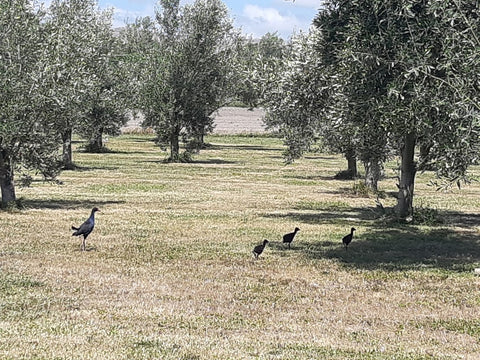About Making Olive Oil at Home
Commercially produced olive oil requires large, customized equipment but with a few investments, making olive oil at home is possible. There are a couple of ways of going about making oil from olives at home, but the basics of extracting olive oil remain the same. First you need to obtain fresh olives whether this is from your own olive trees or from somewhere in the neighbourhood. Just be sure not to use preserved olives.
When making oil from olives, the fruit can be ripe or unripe, green, or black, although this will change the flavour profile. An easy rule to follow is 1/3 black, 1/3 turning colour, 1/3 green. Once you have obtained the olives, the fruit needs to be washed thoroughly and any leaves, twigs, dust or bird deposits removed.
Then if you do not have an olive press (a somewhat costly piece of equipment but worth it if you are going to make extracting olive oil a business), you may choose to pit the olives using a olive pitter, a time consuming task. Now it’s time for the fun/work of extracting the olive oil.
How to Press Olive Oil
If you do have an olive press, all you need to do is place the washed olives in the press and the press does the work for you. No need to pit the olives first. If pitting the olives seems to be too much work, you can use mallets to pound the olives into a rough paste. Protect your work surface with plastic wrap before commencing to smashing.
If you do not have a press, place the olives in a second hand blender (the hard pits can ruin a blender so I recommend using a blender sourced specifically for the task).
Add a bit of hot but not boiling water as you blend to help form a soft paste.
Vigorously stir the olive paste with a spoon for a few minutes to help draw the oil from the pomace or pulp. Cover the olive mix and allow it to sit for ten minutes. As it rests, the oil will continue to bead out of the olive paste.
Extracting Olive Oil
Put a colander or sieve over a bowl and line it with cheesecloth. Pour the contents of the blender into the cheesecloth. Gather the ends together and squeeze the liquids from the solids, the oil from the olives. Lay the bundled cheese cloth in the bottom of the colander and weigh it down with something heavy or lay a bowl inside the colander on top of the cheesecloth and fill it with dried beans or rice. The additional weight atop the cheesecloth will help to extract more oil. Every five to ten minutes push down on the weight to release more oil from the olive paste. Continue with the extraction for at least 30 minutes. Overnight will extract even more oil.
When complete, discard the olive oil mash. You should have oil and water in the first bowl. This will naturally separate, the heavier water sinks, and the olive oil floats to the top. Use a turkey baster or syringe to draw up the oil. Place the oil in a dark coloured glass container and store in a cool dry area for two to four months. Use as soon as possible however, as homemade olive oil does not store as long as commercially produced.
Article adapted from:




